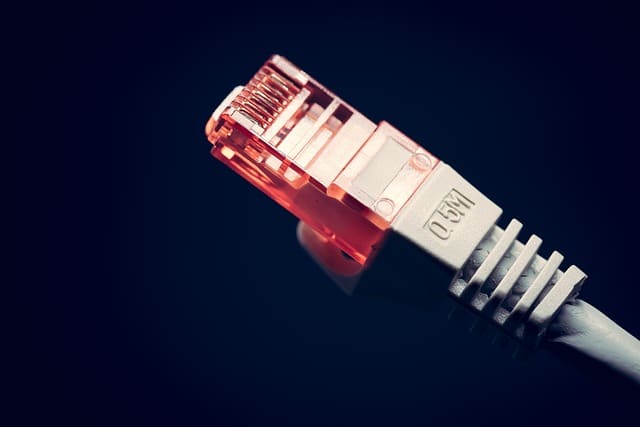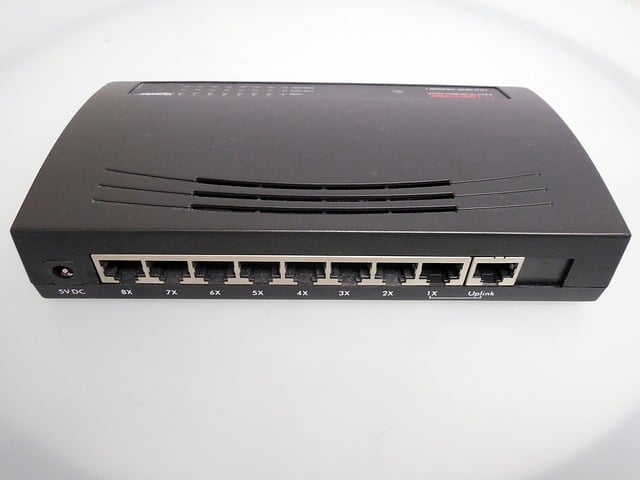
Access the Router Admin Panel clicking here: 192.168.1.1
You can login at your router configuration by entering one of the following queries in your browser: http://192.168.1.1, 192.168.l.l (via Google) or simply 192.168.1.1.
The gateway of some routers are located at 192.168.1.1, by this IP address it sends traffic from all devices of the network and receive the incoming traffic to provide a connection to Internet.
Contents
192.168.1.1 – General Information
Type of IP address: The IP address 192.168.1.1 belongs to the range of private addresses.
Default configuration for 192.168.1.1
Through the IP address 192.168.1.1 you can access the configuration panel of your router. The default settings of your router were preconfigured by your manufacturer and includes access credentials, default firewall rules and other settings.
Default credentials
Your router manufacturer has configurated your default credentials to login into your router panel.
Default usernames for 192.168.1.1: admin and 1234.
Default passwords for 192.168.1.1: admin, password, 1234 or empty (Enter).
These credentials may change depending on your Internet provider.
In factory mode, the IP address 192.168.1.1 allows you to access your router’s configuration panel through any of these credentials.
If you cannot access your router’s panel using the default settings, you must request this information from your Internet service provider by calling to their phone number, they may modify these values in accordance with their terms, preserving the access to 192.168.1.1.
Featured IP addresses
- LOGIN 192.168.1.254
- LOGIN 192.168.0.1
- LOGIN 192.168.10.1
- LOGIN 192.168.100.1
- LOGIN 10.0.0.1
- SPANISH 192.168.1.1
Common mistakes
Customize your modem at 192.168.1.1
You can customize your modem settings accessing to your router admin in the IP address: 192.168.1.1. Regardless of the features of your router, you can modify some settings of your default gateway:
Network name and password
- Devices filtering: You can block unknown devices.
- Firewall: Deny external IP addresses, see some options in the section “Firewall Filtering Rules”.
- Parental Device Control: Assign internet availability times for specific devices on your network.
- Internet connection audit: Verify the DSL connection, access to your gateway at 192.168.1.1, etc.
Private IP address range
Private IP addresses are defined in RFC (Request for Comment) number 1918, 192.168.1.1 belongs to the range of private IP addresses, whose main use is the access of your gateway.
The range of private IP addresses used within the local network for the gateway whose IP is 192.168.1.1, comes from 192.168.1.2 to 192.168.1.254, which also belong to the range of local IP addresses.
That means more than 250 simultaneous devices can be assigned to connect to the same network, using different IP addresses whose gateway address is 192.168.1.1
Public IP address vs 192.168.1.1
Although the IP address 192.168.1.1 is assigned directly by the provider to access the administration panel of your modem, this IP address can only be accessible within your local network.
The purpose of private IP addresses is mantain a local connection that allows communication between the different devices within the internal network, however none of its devices can be accessed from the outside, or from the internet.
Internet service providers provide a public IP address to allow the access of each of the devices connected through the router to the Internet.
A IP translation is made from each private IP address to get access to the public IP address of the router in order to access the outside.
You cannot modify your public IP address, since it was assigned by the IANA to your Internet provider, therefore it is possible that this public IP address can change in a transparent way for you, without affecting the IP address of your gateway, the same as 192.168.1.1.
What is my public IP
To find what your public IP address, you can access the configuration of your router at 192.168.1.1, and depending on the brand of the modem it is immediately displayed, assuming that this address is assigned by your internet provider.
Typically, this IP address is dynamic, that is, it changes every time the router reboots or when determined by your Internet provider.
Some models have the ability to configure this IP address, which is very useful, for example, when installing an IP camera service.
Firewall filtering rules
Even though you can make use of your public IP address directly, it is recommended that you always use a firewall to prevent network attacks. The firewall performs filtering on the 192.168.1.1 gateway.
When you configure a filtering rule in your firewall, it can indicate which IP addresses to block, both internally and externally, some examples of use would be the following:
- Internal filtering rules: Parental control can be carried out to prevent internet access to your children’s devices after a certain hour of day.
- Filtering rules from outside: You can block access from your IP address to some access point or external network, for example an IP address that tries to send viruses or malware to any of the devices on the network.
Note: The filtering rules act on the access point, that is, in 192.168.1.1, therefore you cannot block the exchange of data between devices connected to each other on the internal network. Only for data exchange between internal and external network.
192.168.1.1 Common Issues
Sometimes when trying to access the address 192.168.1.1, you will not have access, for this reason we show you some causes and solutions to allow access to the administration panel.
Access problems
Access problems in your administration panel at 192.168.1.1 may be temporary, for this we recommend trying the following solutions:
Can’t load the page
Not having access to the 192.168.1.1 site can be caused by one of three options:
- Getting no response from website: This error usually happens when we try to enter the 192.168.1.1 site without having a successful connection to the network. To verify that you are correctly connected to your network, check the following on your device:
- Wi-Fi connection: Verify that your device is on the same network as your modem and that you have enough signal.
- Via Ethernet: Verify that your cable connection to the modem is correct.
- Other connection failures: You must verify that your modem is turned on and correctly connected to the telephone line.
- Wrong Address: Depending on the brand of your modem, the location to access in your router’s settings could be shown as an IP address other than 192.168.1.1.
- Some of the common IP addresses to access the modem configuration are:
- 192.168.1.254
- 10.0.0.1
- 192.168.0.1
- 192.168.100.1, 192.168.10.1, 192.168.8.1.
- 192.168.l.l and other spelling errors: Spelling errors are quite common, so you should verify that you are trying to enter 192.168.1.1 (and not 192.168.l.l).
- Some of the most common spelling errors for this IP address are: 192.168.ll, 192.168.1, 192.168.o.1.1, 192.168.l.1, 192.168.0.1.1, 192.168.1.l, http //192.168 .1.1, 192 168 1 1, 192 168 ll, 19216811, 192.168 1.1, 192 168 1 1, 192.168 l 1.1 login, 192 168.1 1, www 192.168 1.1, 192.168 1.1, 192.168 l 1.1, 192.168 1 1, among other common errors.
- Note: It is possible to access using the http protocol, as follows: http://192.168.1.1

DSL line failures
To have a successful Internet service it is necessary to have a latent connection to the telephone line, so it is not enough to have access to the IP address 192.168.1.1.
Sometimes the service is interrupted and as a consequence you will not have access to the Internet. The easiest way to diagnose it is by connecting to your administration panel at 192.168.1.1 and you will see a message similar to “DSL failure” on your dashboard.
Some of the possible causes of DSL line failures are as follows:
- External causes of DSL failures:
- Damage to some part of the telephone installation outside your home, for example to a broken cable due to the fall of a tree or pole.
- Weak power from the transmitting station.
- Internal causes of DSL failures:
- Damage to the internal telephone line or satellite installation in your home (depending on your provider).
- Damaged modem: A damaged modem is almost always best determined by following the diagnostic instructions from your Internet provider’s technical support.
- Debts of your Internet service: The most common cause of service suspension, you need to make your payment and possibly cover a reconnection fee.
If the DSL connection failure is external, calling your Internet service reporting phone number should be enough to restore your service without the need for a technician to come to your home.
On the other hand, if the failure of the DSL connection is internal, the technician must go to your home to repair the damage, or replace your damaged modem (or router).
It is important to show that the DSL connection interferes with your Internet service, but not with your internal network connectivity; unless your modem is damaged, you can enter the modem administration panel normally.
Change my IP address
Changing the IP address of your devices is a relatively simple process. Normally a mechanism called DHCP takes care of the dynamic assignment of the IP addresses of your devices.
However, you can assign an IP address to your devices manually, as long as they are within the range of the netmask of your internal network.
If the management access is at 192.168.1.1, you could try assigning an IP address that is in the range between 192.168.1.2 and 192.168.1.254.
Some examples of these addresses are: 192.168.1.3, 192.168.1.10, 192.168.1.20, 192.168.1.254.
The assignment of IP addresses for the devices on your local network is carried out as follows, according to the operating system you have:
- Windows Operating System:
- Select Start > Settings > Network and Internet.
- If your device is connected via Wi-Fi, select WiFi > Manage known networks > Local network name > Properties.
- If your device is connected by Ethernet, select Ethernet and the name of your network.
- Select the IP address you want to assign (at the range of your netmask).
- MacOS Operating System:
- Select System Preferences > Red > Advanced > TCP / IP
- Select the option “Use DHCP manually.”
- Enter the desired IP address at the range of your gateway.
- Linux Distributions:
- Use the command: ip addr add [IP address] [interface], or simply use the command: ifconfig [interface] [IP address]
- Note: it is possible to know the name of your interface by typing the ifconfig command.
Brands using 192.168.1.1
The IP address 192.168.1.1 is a common address for many of today’s routing devices, therefore many brands use this IP address as a gateway.
Most of the brands mentioned below could also use other IP addresses to provide access to the administration panel of your router, however some of their models use the address 192.168.1.1 as access:
Note: Due to the large number of manufacturers that use the IP address 192.168.1.1, we list them in alphabetical form for ease of user reading.
- 3Com
- AboCom, Accton Technology, Acelink, Actiontec, ADB Router, ADI Engineering, Adtran, Aerohive, Airlink Router, Airnet, Alcatel-Lucent, Alfa Network, Alice, Allied Telesis, Alpha, Amigo Technology, Amrisc, APC, Araknis Networks, Arcadyan, Askey, As Rock, Asus, Atheros, Aztech
- Band Luxe, Baud Tec, Bcm, Beeline, Ben Q, Billion, Blitzz, Browan, Budget, Buffalo
- Calix, Cameo, Castle Net, China Telecom, Cisco, Clear Access, C Net, Compaq, Comtrend, Connectland, Corega, Creative, Cyber Tan
- Dare Global, D Link, Dq Technology, Dray Tek, Dynalink, Dzs
- Eci, Edgewater Networks, Edimax, Eltel, Emx Tech, Encore, En Genius, E Top
- Fast, Fiber Home, Flyingvoice, Gateway, Gemtek, Getnet, Gigaset
- Hame, Hawking, Hongdian, Huawei
- IBM, I Boss, Innacomm, Innoband, Intelligent Technology, Isonwifi
- Jcg, Jetstream, Kasda, Kozumi
- Lenovo, Level One, Linksys, Lippert Components
- Mac Sense, Mercury, Micronet, Mitra Star, Mo Fi Network, Motorola, M Qmaker, Msi
- Nag, Nec, Netcore, Netgear, Netis, Netopia, Netronix, Netsys, Netwee, Network Everywhere, Newer Technology, Newifi, Nexaira, Nokia
- On Networks, Option, Orange
- Pakedge, Paradigm, Perfect, Phicomm, Pirelli, Planet, Planex, Pro Nets, Proware, Qtech
- Radio Labs, Ready Net, Rosewill, Runtop
- Sagemcom, Sapido, Ser Comm, Shanghai DareGlobal Technologies, Shenzhen, Shenzhen Gongjin Electronics, Shiko, Siemens, Smart Rg, Spark Lan, Synology
- Technicolor, Tecom, Tena, Texas Instruments, Totolink, Tp Link, Tren Dnet, Turris
- Ubiquiti Networks, Unbranded, Uniden, US Robotics, UTT, Vizio
Well Communications, Westell, Western Digital, Wistron Neweb - Xa Vi, X Micro, Zbt, Zero, Zonet, Zoom, ZTE, Zy Xel
Final words
If you cannot access the panel using the 192.168.1.1 address, your access IP address may be different. This is possible because many brand vendors that use this IP address also use other IP addresses for their default gateways.
To show this list, you can check the following IP addresses to validate the correct IP address of your gateway: 192.168.1.254, 192.168.100.1, 192.168.10.1, 192.168.8.1, etc.
